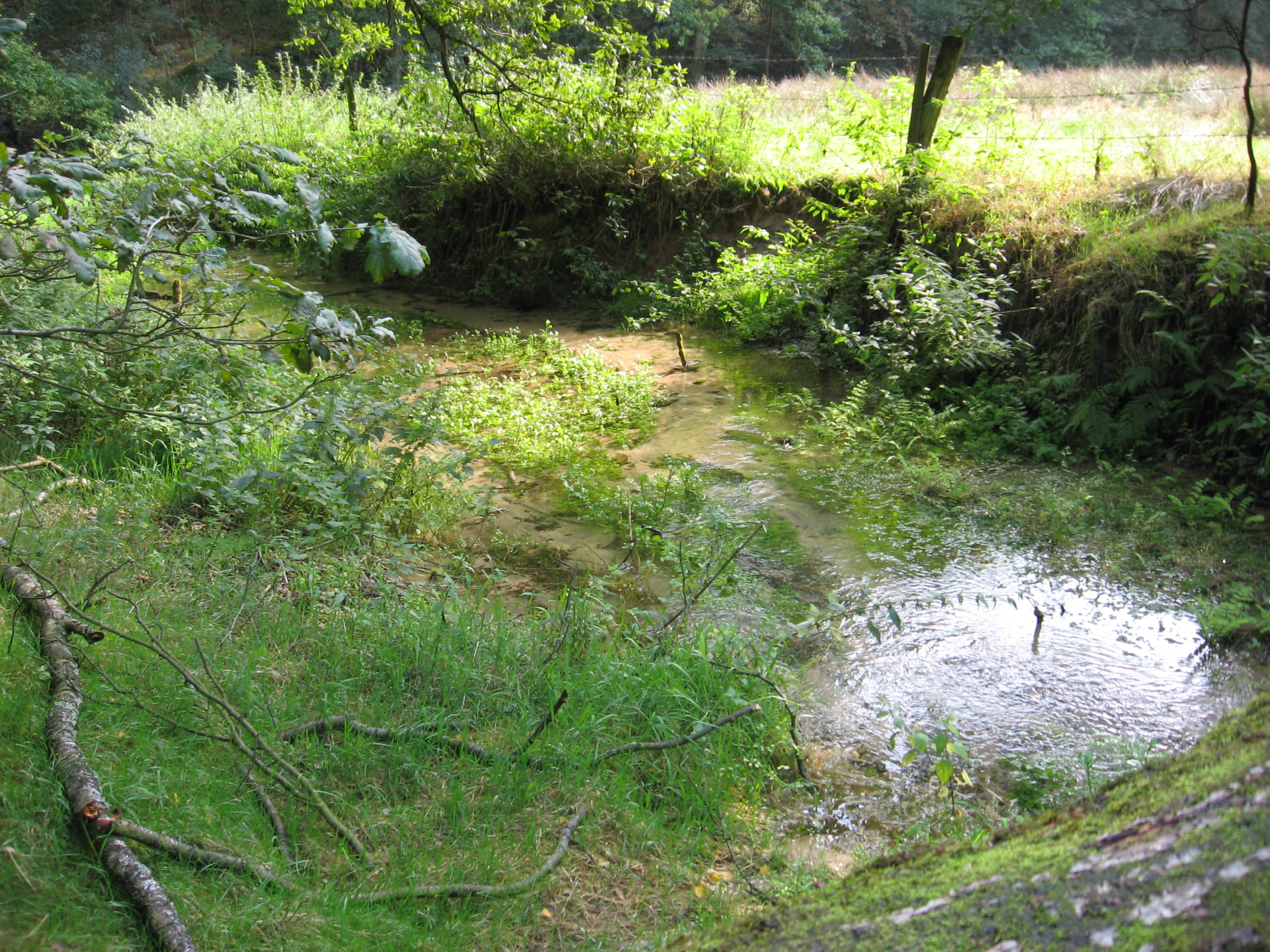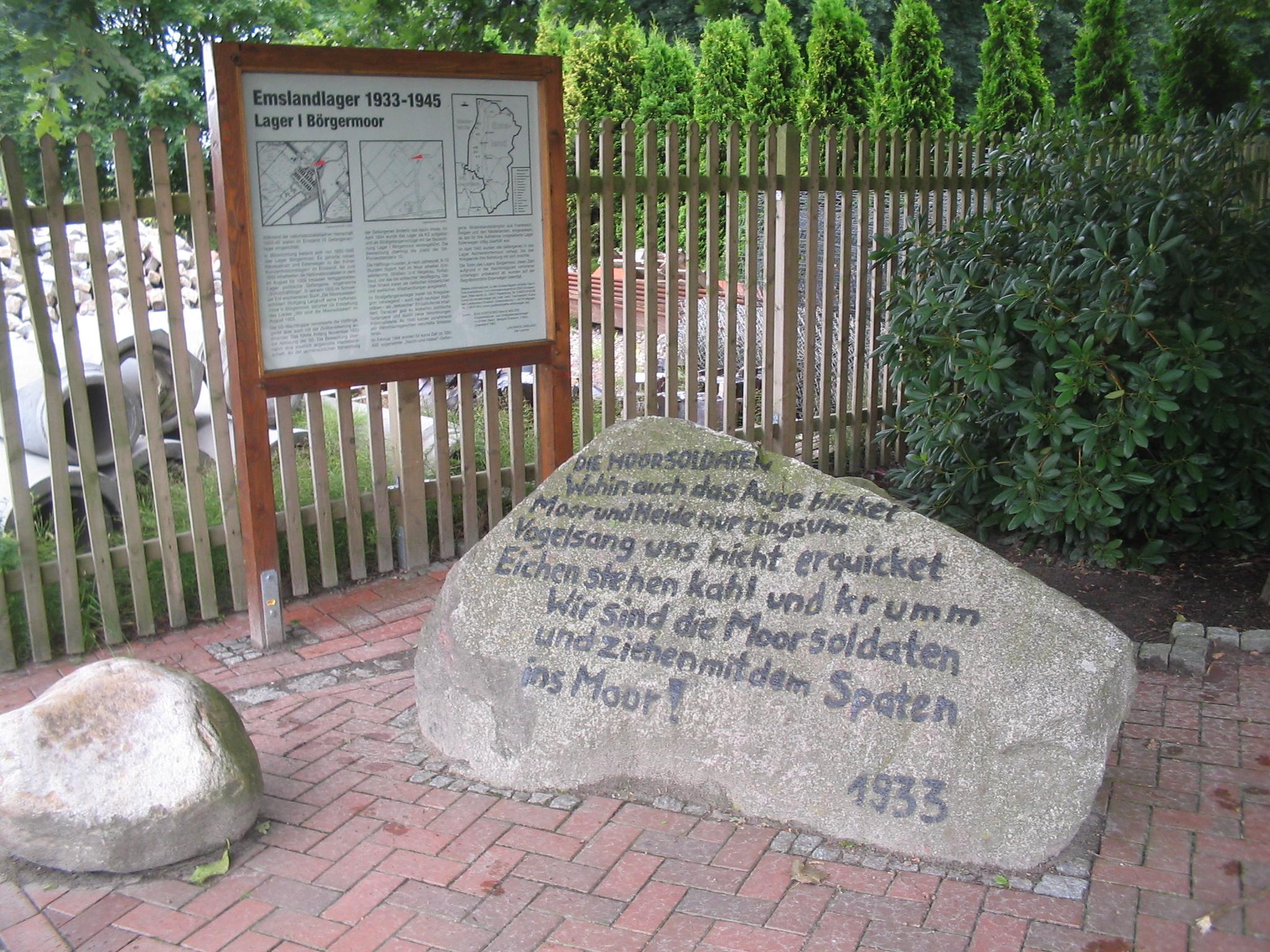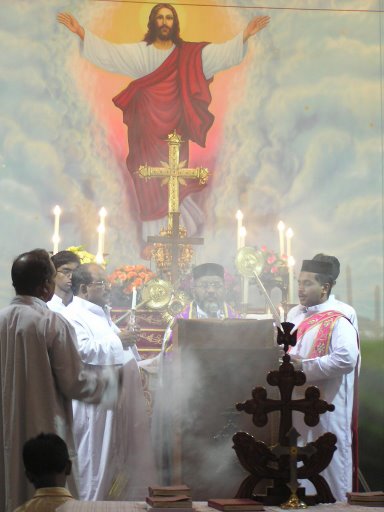|
Tunxdorf
Tunxdorf is a small village in Papenburg, Lower Saxony, Germany. Along with the neighbor village Nenndorf, it constitutes the "Tunxdorf-Nenndorf" district of Papenburg. In 1992, 343 inhabitants overall lived in Tunxdorf and Nenndorf. Geographical location Tunxdorf is located between Aschendorf and Papenburg close to the boundary of the Netherlands and southern from Ostfriesland. The river Ems traverses Tunxdorf. In Tunxdorf, the Ems has a nature protection area called "Tunxdorfer Schleife". Culture and recreation The lake "Tunxdorfer Waldsee" originated at the dike construction because the Ems has a sandy beach and is used for swimming. Moreover, Tunxdorf has a camping ground. Many other villages in the Emsland Tunxdorf and Nenndorf have their own Schützenfest, which is yearly celebrated on Ascension Day The Solemnity of the Ascension of Jesus Christ, also called Ascension Day, Ascension Thursday, or sometimes Holy Thursday, commemorates the Christian belief of the bodily As ... [...More Info...] [...Related Items...] OR: [Wikipedia] [Google] [Baidu] |
Papenburg
Papenburg (; East Frisian Low Saxon: ''Papenbörg'') is a city in the district of Emsland, Lower Saxony, Germany, situated at the river Ems. It is known for its large shipyard, the Meyer-Werft, which specializes in building cruise liners. Geography Districts Papenburg is subdivided into 6 urban districts, Papenburg-Untenende, Papenburg-Obenende, Herbrum, Tunxdorf-Nenndorf, Aschendorf and Bokel. History In the ''Chronicle of the Frisians'', written in the 16th century by the East-Frisian council Eggerik Benninga, the Papenburg (at that time a manor) is mentioned for the first time. In 1458, Hayo von Haren, called "von der Papenburch", confessed to be leaned with the Papenburg. The contract that was made because of this is the earliest verifiably documented mention of Papenburg. On 2 December 1630, the district administrator Dietrich von Velen purchased the manor for 1500 Reichsthaler from Friedrich von Schwarzenberg in order to found a settlement in the fen-surrounded region ... [...More Info...] [...Related Items...] OR: [Wikipedia] [Google] [Baidu] |
Ems (river)
The Ems (german: Ems; nl, Eems) is a river in northwestern Germany. It runs through the states of North Rhine-Westphalia and Lower Saxony, and discharges into the Dollart Bay which is part of the Wadden Sea. Its total length is . The state border between the Lower Saxon area of East Friesland (Germany) and the province of Groningen (Netherlands), whose exact course was the subject of a border dispute between Germany and the Netherlands (settled in 2014), runs through the Ems estuary. Course The source of the river is in the southern Teutoburg Forest in North Rhine-Westphalia. In Lower Saxony, the brook becomes a comparatively large river. Here the swampy region of Emsland is named after the river. In Meppen the Ems is joined by its largest tributary, the Hase River. It then flows northwards, close to the Dutch border, into East Frisia. Near Emden, it flows into the Dollart bay (a national park) and then continues as a tidal river towards the Dutch city of Delfzijl. Betwee ... [...More Info...] [...Related Items...] OR: [Wikipedia] [Google] [Baidu] |
Lower Saxony
Lower Saxony (german: Niedersachsen ; nds, Neddersassen; stq, Läichsaksen) is a German state (') in northwestern Germany. It is the second-largest state by land area, with , and fourth-largest in population (8 million in 2021) among the 16 ' federated as the Federal Republic of Germany. In rural areas, Northern Low Saxon and Saterland Frisian are still spoken, albeit in declining numbers. Lower Saxony borders on (from north and clockwise) the North Sea, the states of Schleswig-Holstein, Hamburg, , Brandenburg, Saxony-Anhalt, Thuringia, Hesse and North Rhine-Westphalia, and the Netherlands. Furthermore, the state of Bremen forms two enclaves within Lower Saxony, one being the city of Bremen, the other its seaport, Bremerhaven (which is a semi-enclave, as it has a coastline). Lower Saxony thus borders more neighbours than any other single '. The state's largest cities are state capital Hanover, Braunschweig (Brunswick), Lüneburg, Osnabrück, Oldenburg, Hildesheim, Salzgitt ... [...More Info...] [...Related Items...] OR: [Wikipedia] [Google] [Baidu] |
Germany
Germany,, officially the Federal Republic of Germany, is a country in Central Europe. It is the second most populous country in Europe after Russia, and the most populous member state of the European Union. Germany is situated between the Baltic and North seas to the north, and the Alps to the south; it covers an area of , with a population of almost 84 million within its 16 constituent states. Germany borders Denmark to the north, Poland and the Czech Republic to the east, Austria and Switzerland to the south, and France, Luxembourg, Belgium, and the Netherlands to the west. The nation's capital and most populous city is Berlin and its financial centre is Frankfurt; the largest urban area is the Ruhr. Various Germanic tribes have inhabited the northern parts of modern Germany since classical antiquity. A region named Germania was documented before AD 100. In 962, the Kingdom of Germany formed the bulk of the Holy Roman Empire. During the 16th ce ... [...More Info...] [...Related Items...] OR: [Wikipedia] [Google] [Baidu] |
Aschendorf
Aschendorf is a railway station located in Aschendorf, Lower Saxony, Germany. The station lies on the Emsland Railway (Rheine - Norddeich) and the train services are operated by WestfalenBahn WestfalenBahn is a railway company operating regional train service in Lower Saxony and North Rhine-Westphalia, Northern Germany. It was founded in 2005 by Essener Versorgungs & Verkehrsgesellschaft, Minden Museum Railway, moBiel and Verkehrsb .... Train services The station is served by the following service(s): *Regional services ''Emden - Leer - Lingen - Rheine - Münster'' References Railway stations in Lower Saxony {{LowerSaxony-railstation-stub ... [...More Info...] [...Related Items...] OR: [Wikipedia] [Google] [Baidu] |
Netherlands
) , anthem = ( en, "William of Nassau") , image_map = , map_caption = , subdivision_type = Sovereign state , subdivision_name = Kingdom of the Netherlands , established_title = Before independence , established_date = Spanish Netherlands , established_title2 = Act of Abjuration , established_date2 = 26 July 1581 , established_title3 = Peace of Münster , established_date3 = 30 January 1648 , established_title4 = Kingdom established , established_date4 = 16 March 1815 , established_title5 = Liberation Day (Netherlands), Liberation Day , established_date5 = 5 May 1945 , established_title6 = Charter for the Kingdom of the Netherlands, Kingdom Charter , established_date6 = 15 December 1954 , established_title7 = Dissolution of the Netherlands Antilles, Caribbean reorganisation , established_date7 = 10 October 2010 , official_languages = Dutch language, Dutch , languages_type = Regional languages , languages_sub = yes , languages = , languages2_type = Reco ... [...More Info...] [...Related Items...] OR: [Wikipedia] [Google] [Baidu] |
Ostfriesland
East Frisia or East Friesland (german: Ostfriesland; ; stq, Aastfräislound) is a historic region in the northwest of Lower Saxony, Germany. It is primarily located on the western half of the East Frisian peninsula, to the east of West Frisia and to the west of Landkreis Friesland. Administratively, East Frisia consists of the districts Aurich, Leer and Wittmund and the city of Emden. It has a population of approximately 469,000 people and an area of . There is a chain of islands off the coast, called the East Frisian Islands (''Ostfriesische Inseln''). From west to east, these islands are: Borkum, Juist, Norderney, Baltrum, Langeoog and Spiekeroog. History The geographical region of East Frisia was inhabited in Paleolithic times by reindeer hunters of the Hamburg culture. Later there were Mesolithic and Neolithic settlements of various cultures. The period after prehistory can only be reconstructed from archaeological evidence. Access to the early history of East Fris ... [...More Info...] [...Related Items...] OR: [Wikipedia] [Google] [Baidu] |
Emsland
Landkreis Emsland () is a district in Lower Saxony, Germany named after the river Ems. It is bounded by (from the north and clockwise) the districts of Leer, Cloppenburg and Osnabrück, the state of North Rhine-Westphalia (district of Steinfurt), the district of Bentheim in Lower Saxony, and the Netherlands (provinces of Drenthe and Groningen). History For a long time the region of the Emsland was extremely sparsely populated, due to the fens on both sides of the river. Small villages were established in medieval times along the river and on the Hümmling. In the 13th century the bishops of Münster gained control over the region; the Emsland remained property of the bishop until 1803, when the clerical states were dissolved. It came under rule of Prussia and Arenberg, but after the Napoleonic Wars the Congress of Vienna decided to hand the territory over to the Kingdom of Hanover. The Duchy of Arenberg continued to exist as a fief of the Hanoverian kings. When Hanover was a ... [...More Info...] [...Related Items...] OR: [Wikipedia] [Google] [Baidu] |
Schützenfest
A Schützenfest (, '' marksmen's festival'') is a traditional festival or fair featuring a target shooting competition in the cultures of Germany, the Netherlands and Switzerland. At a Schützenfest, contestants compete based on their shooting abilities, for example, by shooting at a wooden representation of an eagle. The competition's winner becomes the ''Schützenkönig'' ("king of marksmen") until the following year's competition. The commercially-organized Hanover Schützenfest, Germany, is the largest marksmen's funfair in the world with more than 7,000 marksmen, 250 rides and inns, five large beer tents, and the "Marksmen's Parade". The parade, with more than 10,000 participants from Germany and all over the world and more than 100 bands, is long. It is the longest parade in the world. The landmark of the funfair is one of the highest transportable big wheels (US = Ferris wheels) in the world. It is high and offers seating for 420 people in 42 cabins. History Schüt ... [...More Info...] [...Related Items...] OR: [Wikipedia] [Google] [Baidu] |
Ascension Day
The Solemnity of the Ascension of Jesus Christ, also called Ascension Day, Ascension Thursday, or sometimes Holy Thursday, commemorates the Christian belief of the bodily Ascension of Jesus into heaven. It is one of the ecumenical (i.e., shared by multiple denominations) feasts of Christian churches, ranking with the feasts of the Passion and Pentecost. Following the account of that the risen Jesus appeared for 40 days prior to his Ascension, Ascension Day is traditionally celebrated on a Thursday, the fortieth day of Easter; although some Christian denominations have moved the observance to the following Sunday. The day of observance varies by ecclesiastical province in many Christian denominations, as with Methodists and Catholics, for example. History The observance of this feast is of great antiquity. Eusebius seems to hint at the celebration of it in the 4th century. At the beginning of the 5th century, Augustine of Hippo says that it is of Apostolic origin, and he speaks o ... [...More Info...] [...Related Items...] OR: [Wikipedia] [Google] [Baidu] |
Dwarf (mythology)
A dwarf () is a type of supernatural being in Germanic folklore, including mythology. Accounts of dwarfs vary significantly throughout history however they are commonly, but not exclusively, presented as living in mountains or stones and being skilled craftsmen. In early literary sources, only males are explicitly referred to as dwarfs, although they are described as having sisters and daughters, while both male and female dwarfs feature in later saga literature and folklore. Dwarfs are sometimes described as short, however, scholars have noted that this is neither explicit nor of relevance to their roles in the earliest sources. Dwarfs continue to feature in modern popular culture such as in the works of J.R.R. Tolkien and Terry Pratchett, where they are often, but not exclusively, presented as distinct from elves. Etymology The modern English noun ''dwarf'' descends from ang, dweorg. It has a variety of cognates in other Germanic languages, including non, dvergr and goh, tw ... [...More Info...] [...Related Items...] OR: [Wikipedia] [Google] [Baidu] |






-ed-Nibelungen_Not-p091-sigfird&alberich-gezwerge.jpg)